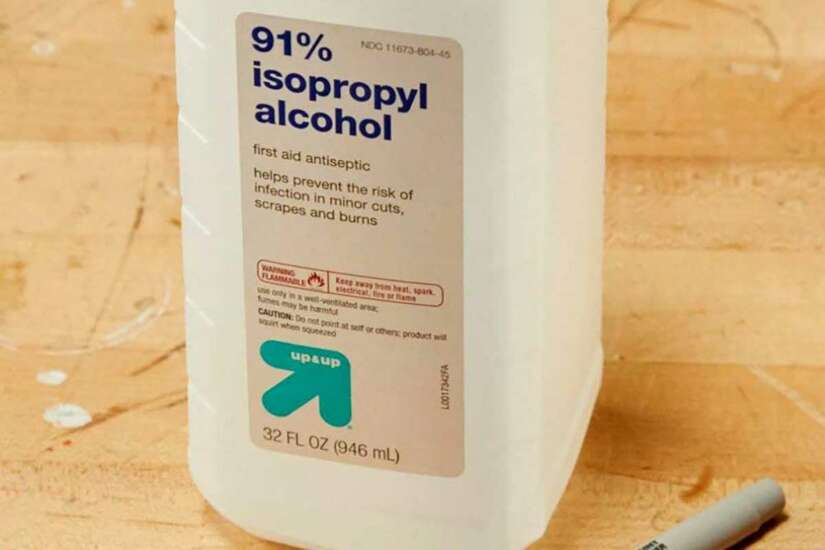THE World Health Organization (WHO) had said that disinfecting surfaces like tables and door knobs and disinfecting hands with the use of alcohol is a must to avoid the spread of Coronavirus (COVID-19).
It also advised people to take steps to protect themselves from the virus, for example by following good hand hygiene and good respiratory hygiene.
When it comes to disinfecting with alcohol, which would you prefer to use – ethyl or isopropyl?
These two alcohols are the same actually when it comes to disinfectant properties. However, they have slight differences when it rubbed on the skin.
Ethanol is the type of alcohol present in alcoholic beverages. Isopropyl alcohol is also known as isopropanol, 2-propanol or rubbing alcohol. When used as disinfectants, both are typically at a concentration of 70 percent in water.
Ethanol works by denaturing proteins and dissolving lipids, effectively destroying many types of bacterial and viral cells. It is ineffective against spores.
Ethanol is typically used in concentrations of 70 percent, because higher concentrations evaporate too quickly and lower concentrations aren’t as effective. It is present in some soaps and hand wipes, but it is capable of drying out skin and so should not be used directly without additional agents.
Isopropyl, on the other hand, evaporates at a similar rate and destroys bacterial and viral cells by the same mechanism. However, it is not as effective at dehydrating living tissue and so is a better solution for disinfecting skin than ethanol. Isopropyl alcohol is often used as an antiseptic for this reason.
In a study conducted on the effectiveness of an ethanol-based cleanser (EBC) compared with isopropyl alcohol pads in reducing bacterial contamination of stethoscope diaphragms, health experts found that cleaning with EBC and isopropyl alcohol pads significantly reduced the colony-forming units (cfu) counts (by 92.8% and 92.5%, respectively), but neither was found to be statistically superior.
Cleaning a stethoscope diaphragm using either EBC or isopropyl alcohol led to a significant reduction in bacterial growth in culture.
For disinfecting surfaces, ethanol and isopropyl alcohol are nearly equally efficient. Ethanol may be used in purely surface-cleaning applications, but isopropyl alcohol can also double as antiseptic and is often used in hospitals.
Both are most effective at 70 percent concentration and can be used to clean small tools if they are immersed for about 10 minutes. Both evaporate quickly, without leaving a residue, and are effective for cleaning optic drives and computer components.
Both alcohols are capable of dissolving lipids, which makes them effective against lipid-wrapped viral cells such as HIV and hepatitis A. They are inexpensive and relatively easy to handle, although their vapors are flammable.
But the most important of all is to rub the alcohol while applying it to make it more effective.

